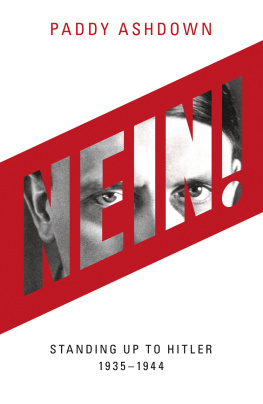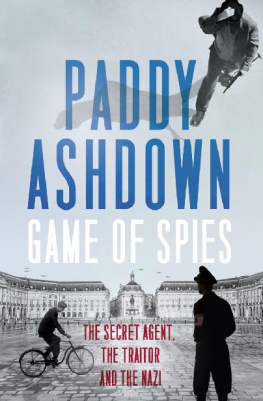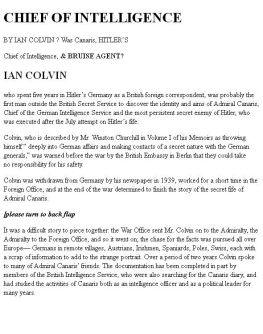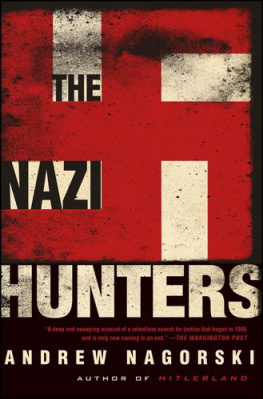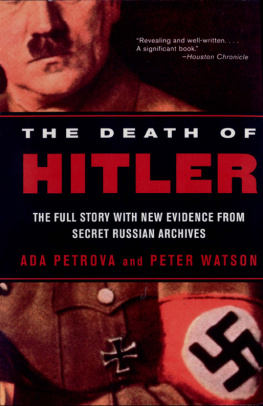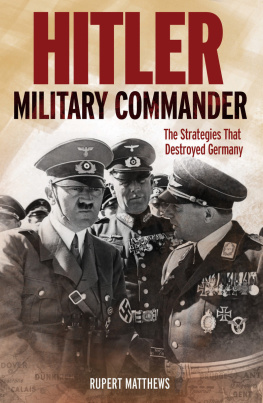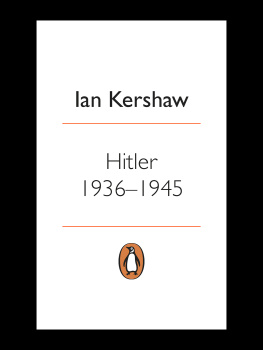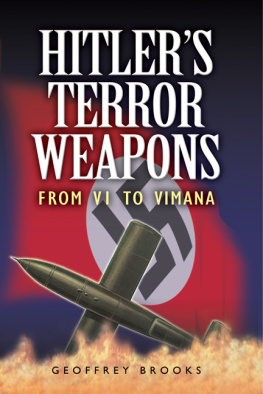William Collins
An imprint of HarperCollinsPublishers
1 London Bridge Street
London SE1 9GF
WilliamCollinsBooks.com
This eBook first published in Great Britain by William Collins in 2018
Copyright Paddy and Jane Ashdown Partnership 2018
The author asserts the moral right to be identified as the author of this work
A catalogue record for this book is available from the British Library
All rights reserved under International and Pan-American Copyright Conventions. By payment of the required fees, you have been granted the non-exclusive, non-transferable right to access and read the text of this e-book on screen. No part of this text may be reproduced, transmitted, down-loaded, decompiled, reverse engineered, or stored in or introduced into any information storage and retrieval system, in any form or by any means, whether electronic or mechanical, now known or hereinafter invented, without the express written permission of HarperCollins.
Source ISBN: 9780008257040
Ebook Edition October 2018 ISBN: 9780008257057
Version: 2018-08-28
To Hans Oster, preux chevalier
Contents
Carl Goerdeler. (Papers of Arthur Primrose Young, Modern Records Centre, University of Warwick: MSS.242/X/GO/3)
Wilhelm Canaris. (Popperfoto/Getty Images)
Ludwig Beck. (Ullstein bild Dtl: Getty Images)
Henning von Tresckow. (Ullstein bild Dtl: Getty Images)
Hans Oster. (AfZ: NL Hans Bernd Gisevius/6.7)
Erwin von Lahousen. (NB)
Hans Bernd Gisevius. (SZ Photo/Sddeutsche Zeitung)
Robert Vansittart. (Scherl/Sddeutsche Zeitung Photo)
Stewart Menzies and his wife Pamela. (Evening Standard/Stringer/Hulton Archive: Getty Images)
Neville Chamberlain on his return from Munich, September 1938. (Keystone/Stringer/Hulton Archive: Getty Images)
Paul Thmmel, Agent A54. (UtCon Collection/Alamy Stock Photo)
Madeleine Bihet-Richou.
Ursula Hamburger (Sonja).
Ursula with her children, Nina, Micha and Peter Beurton. (Courtesy of Michael Hamburger and Peter Beurton)
Leon Len Beurton. (Courtesy of Peter Beurton)
Halina Szymaska. (Courtesy of Marysia Akehurst)
Alexander Foote. (CRIA/Jay Robert Nash Collection)
Rachel Duebendorfer. (The National Archives, ref. KV2/1619)
Allen Dulles. (NARA 306-PS-59-17740)
Rudolf Roessler. (CRIA/Jay Robert Nash Collection)
Sndor Rad with his Geopress staff.
Sndor and Helene Rad with their two sons, June 1941. (Bundesarchiv, Berlin-Lichterfelde)
De Favoriet, the Jelineks shop in The Hague, c. 1939.
Bernhard Mayr von Baldegg, Alfred Rosenberg and Max Waibel.
The Wolfsschanze map room after Stauffenbergs failed assassination attempt, 20 July 1944. (Universal History Archive/Universal Images Group: Getty Images)
Stauffenberg, Puttkamer, Bodenschatz, Hitler, Keitel, 15 July 1944. (Photo12/UIG via Getty Images)
Goerdeler on trial. (Keystone/Hulton Archive: Getty Images)
The Tirpitzufer, c.1939.
La Taupinire, c. 1937.
Alexander Footes flat in Lausanne.
Halina Szymaskas fake French passport.
Footes radio.
Station Maude, Olga and Edmond Hamels radio.
Halina Szymaskas false passport. (Courtesy of Marysia Akehurst)
The Rad familys apartment building at 113, rue de Lausanne in Geneva. (Bundesarchiv, Berlin-Lichterfelde)
The Hamels radio shop in the Geneva suburb of Carouge, c.1939. (Bundesarchiv, Berlin-Lichterfelde)
Defenceless under the night
Our world in stupor lies;
Yet, dotted everywhere,
Ironic points of light
Flash out wherever the just
Exchange their messages:
May I, composed like them
Of Eros and of dust,
Beleaguered by the same
Negation and despair,
Show an affirming flame.
From W.H. Auden, September 1, 1939
The only salvation for the honest man is the conviction that the wicked are prepared for any evil It is worse than blindness to trust a man who has hell in his heart and chaos in his head. If nothing awaits you but disaster and suffering, at least make the choice that is noble and honourable and that will provide some consolation and comfort if things turn out poorly.
Baron vom Stein, urging Friedrich Wilhelm III to oppose Napoleon in 1808
This book is about those at the very top of Hitlers Germany who tried to prevent the Second World War, made repeated attempts to kill him, did all they could to ensure his defeat, worked for an early peace with the Western Allies, and ultimately died terribly for their cause.
Most of my books have been about individual events, or people. The canvas of this one, by contrast, encompasses every sector of German society during the war; international statesmanship or lack of it in capitals from Berlin, to London, to Washington, to Moscow; battles fought from the shores of the Volga to the shadow of the Pyrenees; and spy rings plying their trade in Geneva, Zrich, Paris, Amsterdam, Istanbul and beyond.
Now that I have written it, I am a little surprised to find that a work I thought would tell the history of the Second World War through different eyes turns out also to be a story on the subject to which I return again and again: how human beings behave when we are faced with the challenges of war and especially how, when confronted by great evil and personal jeopardy, we decide between submission and resistance: between loyalty and betrayal.
Is it ever possible to be both traitor and patriot? Is it treachery to betray your state if to do otherwise is to betray your humanity? Even if treachery changes nothing, must you still risk being a traitor in the face of great evil, if that is the only way to lighten the guilt that will fall on your children and your future countrymen? How do people make these choices? How do they behave after they have made them?
Dietrich Bonhoeffer himself one of those murdered for his role in the anti-Hitler resistance said: Responsible action takes place in the sphere of relativity, completely shrouded in the twilight that the historical situation casts upon good and evil. It takes place in the midst of the countless perspectives from which every phenomenon is seen. Responsible action must decide not just between right and wrong, but between right and right and wrong and wrong.
So it is, exactly, here. There are no blacks and whites, just choices between blacker blacks and whiter whites. There are no triumphal personal qualities, and no triumphant outcomes. Just flawed individuals who, at a time of what Bonhoeffer referred to as moral twilight, felt compelled to do the right thing as they saw it. That is a lesser triumph than we might wish for in dangerous times, but it was then and is now probably the only triumph we can reasonably expect.
This story is, at its heart, a tragedy. Like all great tragedies it involves personal flaws, the misjudgements of the mighty, and a malevolent fate. There is individual pity and suffering, and a deal of personal stupidity, here.
But and herein lies the history since these were human beings of consequence, their personal decisions affected lives and events far beyond their circle and their time.
The two central historical questions posed by this book are stark: did the Second World War have to happen? And if it did, did it have to end with a peace which enslaved Eastern Europe?
My purpose is not to provide definitive answers, but rather to present some facts which are not generally known or at least not taken account of and place these against the conventional view of the origins, progress and outcomes of World War II.

